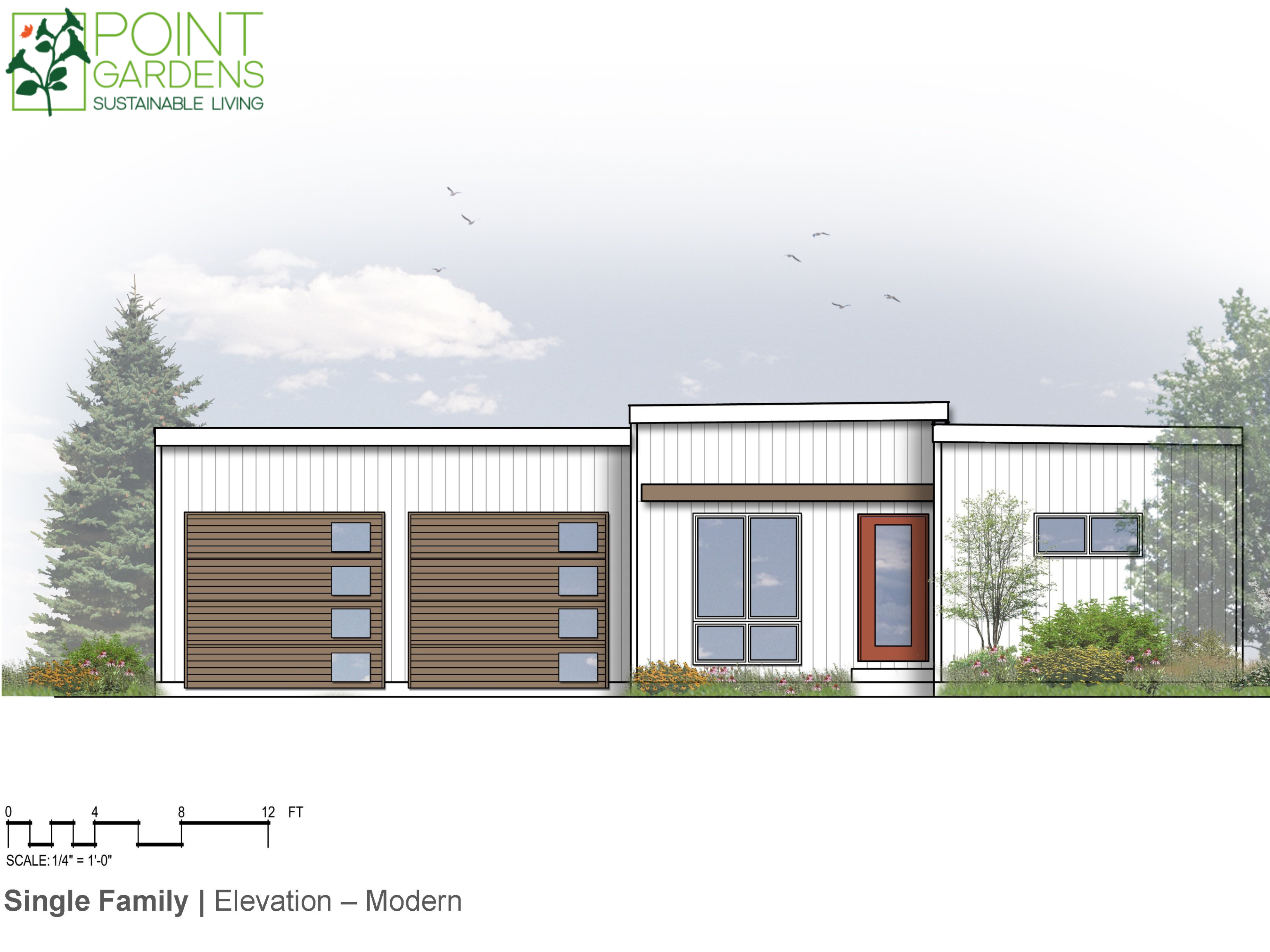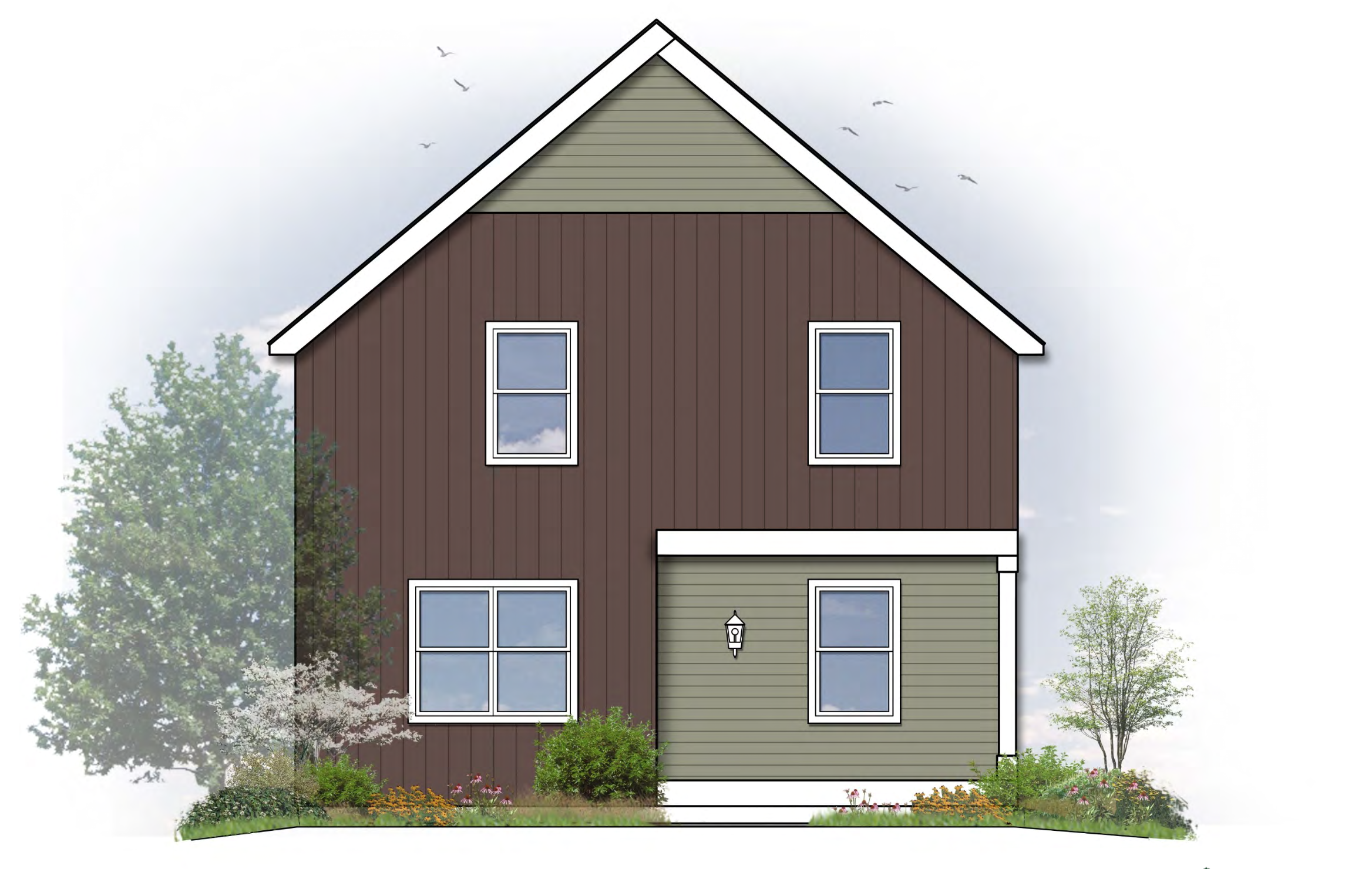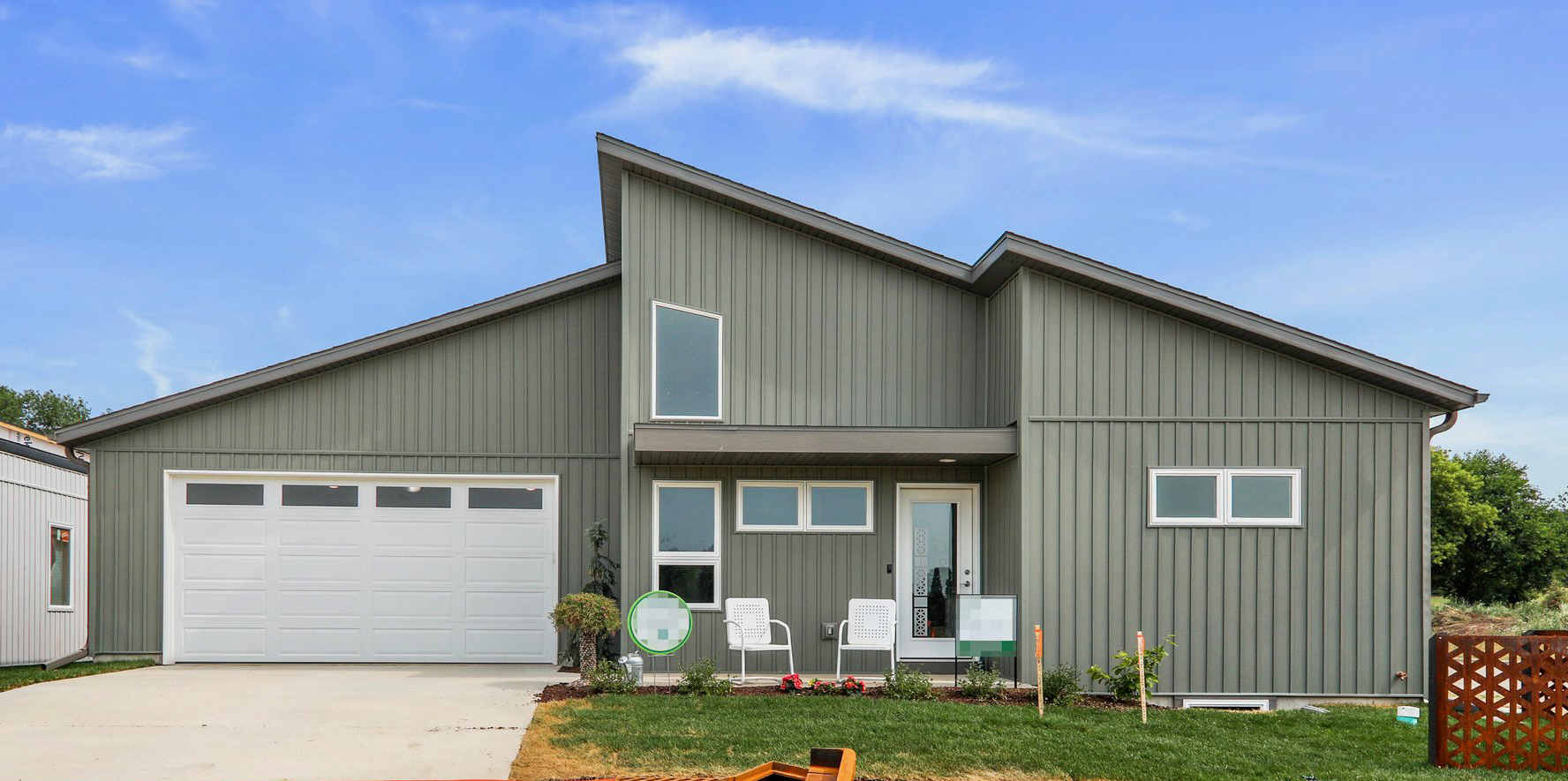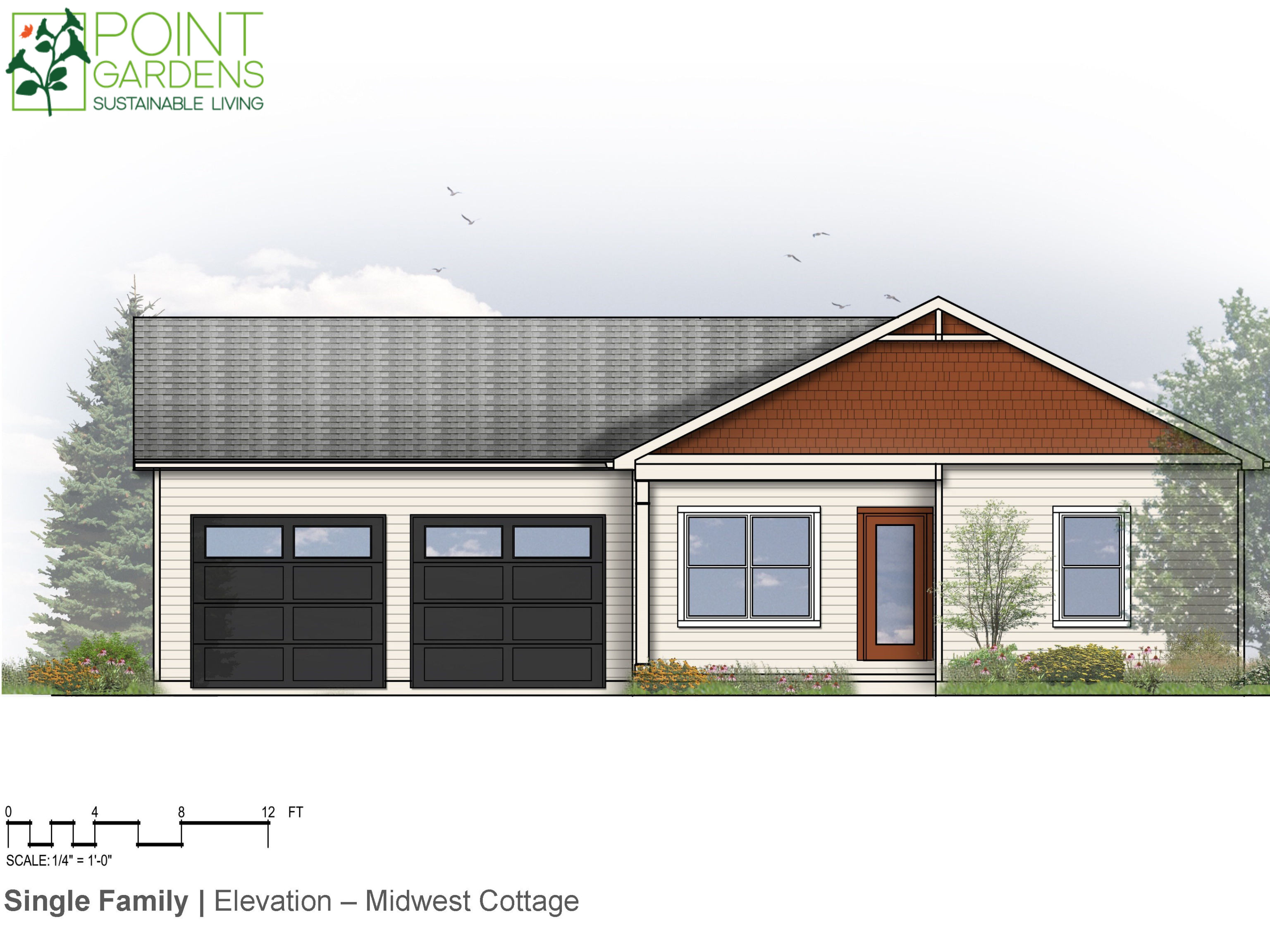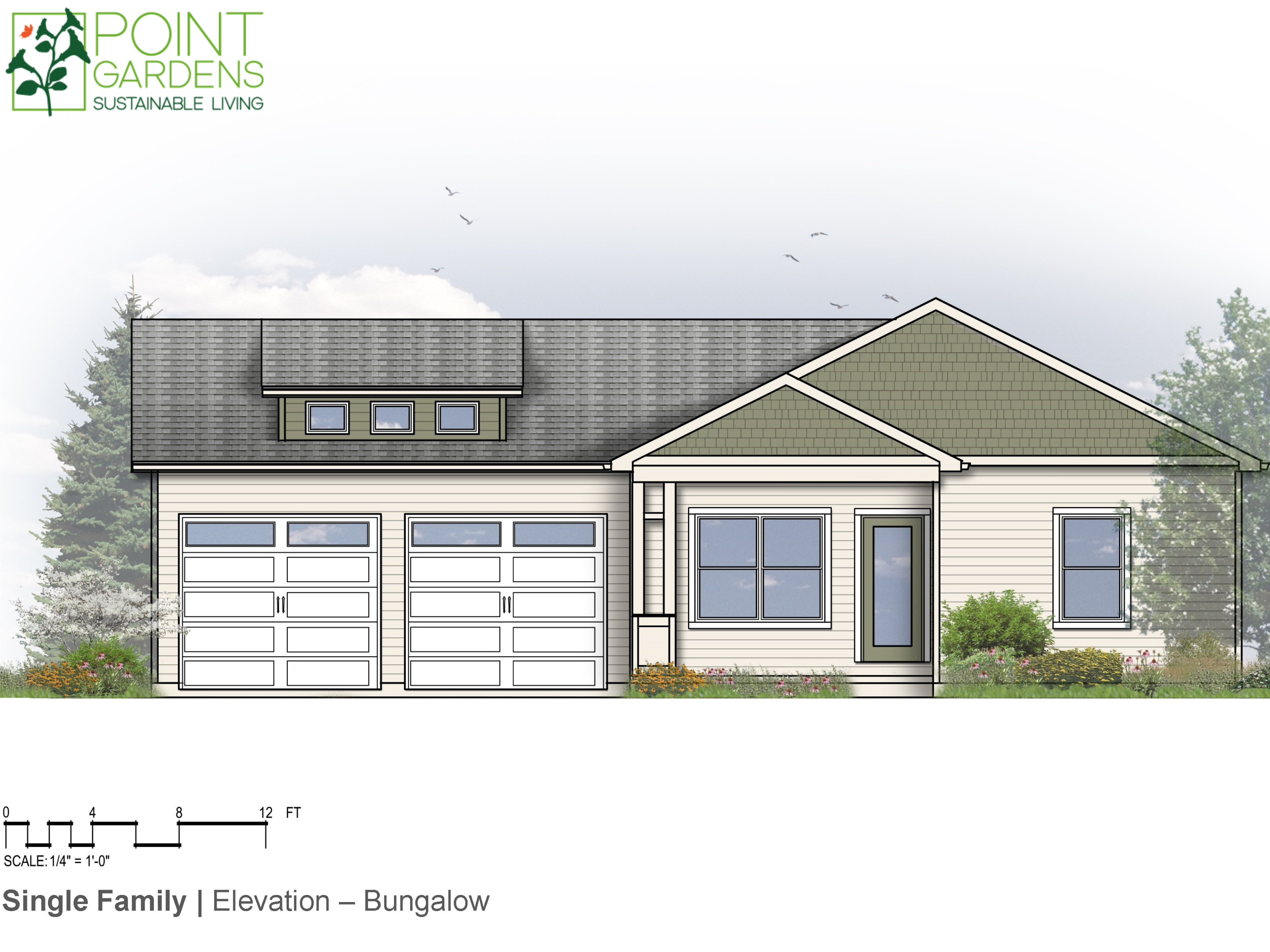Bungalow
The American bungalow did not appear until around 1905 in Southern California, where most landmark examples are found. The bungalow style dominated U. S. home architecture until 1930.
The Bungalow at Point Gardens has a distinctive casual style with an emphasis on arts and crafts. They stand one to one-and-a-half stories tall and have inviting, shaded front porches with visible beams. Bungalows typically have three easily recognizable elements: stairs leading up to the porch, overhanging eaves and dormer windows. The materials used for the Bungalow’s exterior typically suggest warmth and informality, charm and simplicity.
Inside the Bungalow, you’ll find an easy flow and efficient use of space with discreet closets and built-in shelving. These homes often feel bigger than they are thanks to large, open central living spaces and windows that provide natural light.
Bungalow inventory




